See also:
Interview: What’s it like to own a classic MR2?
Toyota sports cars past and present head for the Welsh hills
Toyota sports cars past and present: AE86 vs. GT86
We took an original AW11 MR2 from 1988 and a last-of-line TF300 model from 2006 to Wales, to see how the two compare.
MR2 (1984 – 1989)
Vital statistics:
Engine: 1.6-litre DOHC 16v 4A-GE
Kerb weight: 977kg
Power output: 122bhp
0-60mph: 8.2 seconds
Top speed: 124mph
Taking a ride in the 1988 ‘F’ registration MR2 in our pictures, one is immediately struck by just how quick it feels. With thin pillars, a lack of modern driver aids and a deliciously raucous engine positioned directly behind your seat, you don’t need to be going fast to feel as though you are. What’s also striking is the level of creature comforts on board – electric windows and mirrors, velour seats with adjustable bolsters and a powerful heater belie the car’s 26 years.
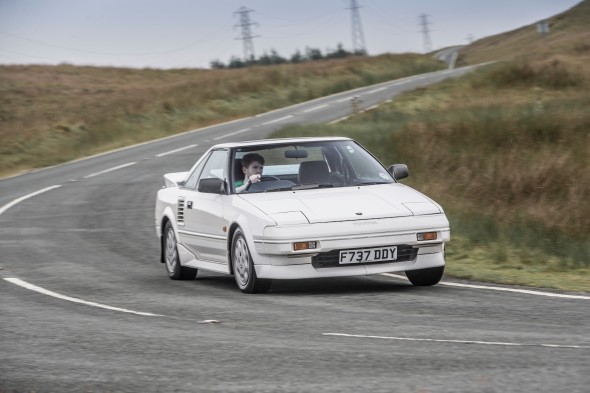

The car is owned by 20-year-old student Ollie Evans, who explained the driving experience to us: “It’s great fun to drive and I love being in it. The car sounds lovely and the handling is perfect.
“The steering is quite heavy but I got used to it after about 10 minutes of driving the car, because the car is mid-engined there’s not a great deal of weight over the front wheels, so it’s easy to manage without power-assisted steering. The brakes feel old but I’m used to driving old cars, so I’m aware that if you want to stop swiftly, you’re going to have to stamp!”

MR2 (1999 – 2006)
Vital statistics:
Engine: 1.8-litre DOHC 16v VVT-i 1ZZ-FE
Kerb weight: 960kg
Power output: 138bhp
0-60mph: 8.0 seconds
Top speed: 131mph
The Chilli Red TF300 special edition in our pictures takes pride of place on our heritage fleet. It’s covered just 16,500 miles from new and has led a cossetted life, routinely maintained regardless of cost. Only 300 TF300s were produced, each one built to order. The car’s position in the production run is individually stitched into the back of each seat and authenticated by a special certificate, signed by the then chairman of Toyota (GB) PLC, Shimpei Kobayashi. Our car is number three.
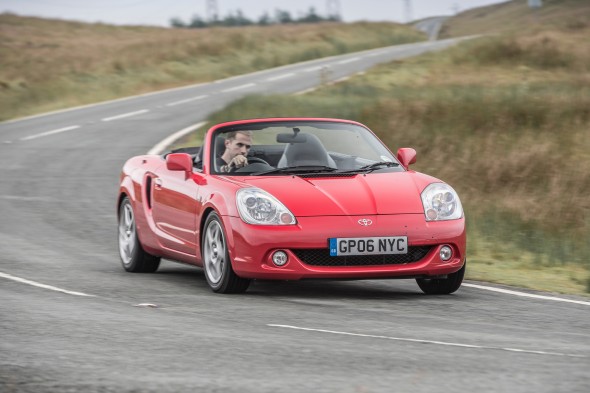

Inside, the seats are trimmed in custom leather and Alcantara. Twin stainless steel TTE sports exhaust pipes also feature, and give a properly throaty note.
The car impressed and surprised those on our shoot with its raw character, stunning handling in corners, and rev-happy nature. When the sun rolled-in over the valley of Bala in North Wales – the location for our drive – there was a clamour to tear back the roof of the car and enjoy some wind-in-hair thrills.
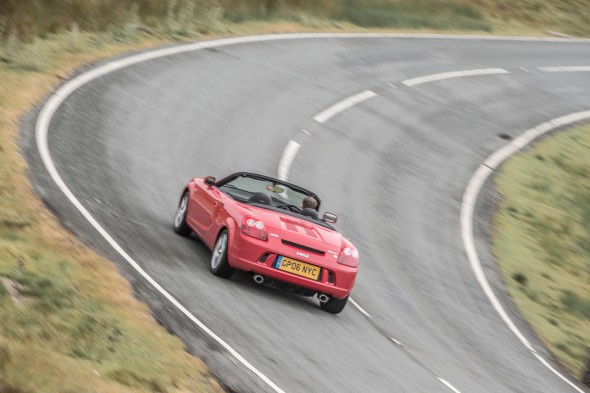
Despite being a rag top, the newer MR2 is the stiffer of the pair. Scuttle shake is notable in its absence, as is buffeting at speed. Interestingly, it is the third-generation car that is the lighter of our pair. This makes the TF300’s 18bhp power advantage feel more significant than it sounds on paper.
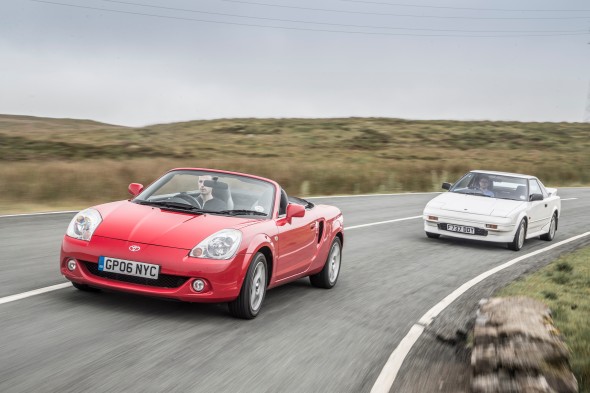
See also:
Interview: What’s it like to own a classic MR2?
Toyota sports cars past and present head for the Welsh hills
Toyota sports cars past and present: AE86 vs. GT86
Where next?
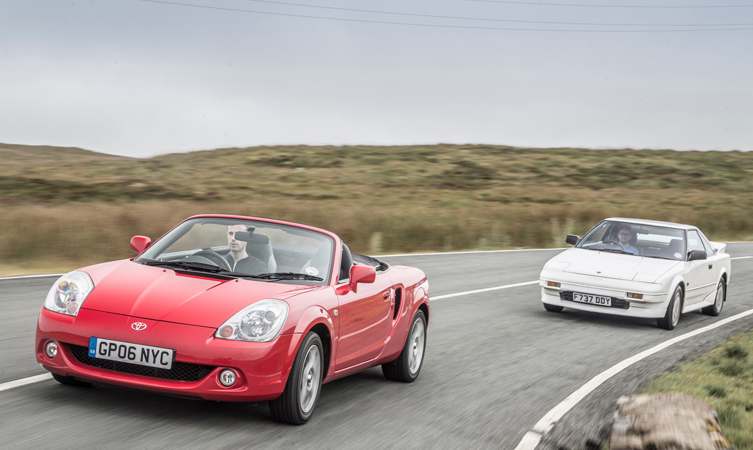

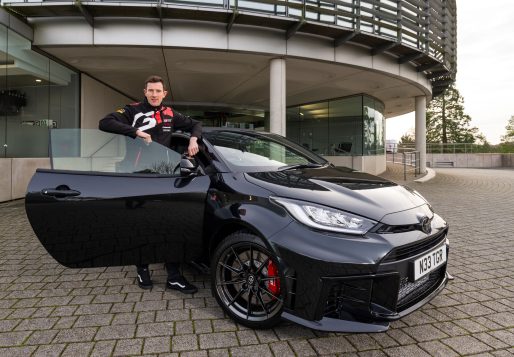
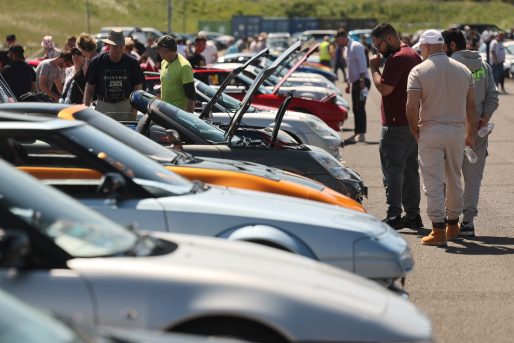
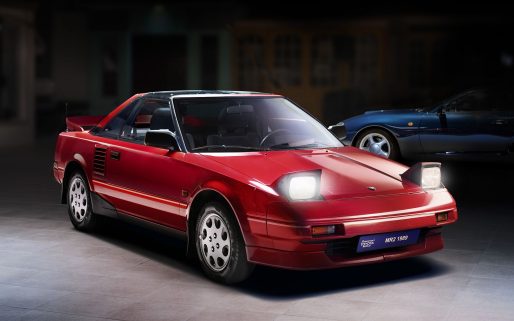
A base model AW11 compared to a rare limited edition ZZW30. Hardly a fair matchup even without the 20 year age difference. Unfortunately for UK I don’t believe you received the AW11SC version, which was produced from 1986-1989, this was essentially the sports version and included a supercharger. 0-60 time of 6.5 seconds.
Hi Michael
Thanks for your post.
You are right, we never imported the supercharged AW11 into the UK but what a great sounding car. We did this feature more as a chance to give the cars a good run in great scenery. You are right a direct comparison would not be correct but reflecting on the differences between the two models would be better.
If you compare the SC version of the AW11, then you should compare that to the limited run of the Turbo version of the ZZW30
In all fairness Michael, I thought the W30 didn’t really feel much faster than my AW11. The AW11 felt like it had more pull to it compared to the W30. However, the W30 did feel a lot sharper in terms of cornering, it just felt more planted comparatively, sharper brakes, instant steering etc. The steering did feel a little light to me but I am used to the AW11 which of course has no power steering, but they were two very comparable cars. If you were to pit them both against each other, driver skill difference could easily make up for any difference in performance, you really would be surprised how comparable they were!